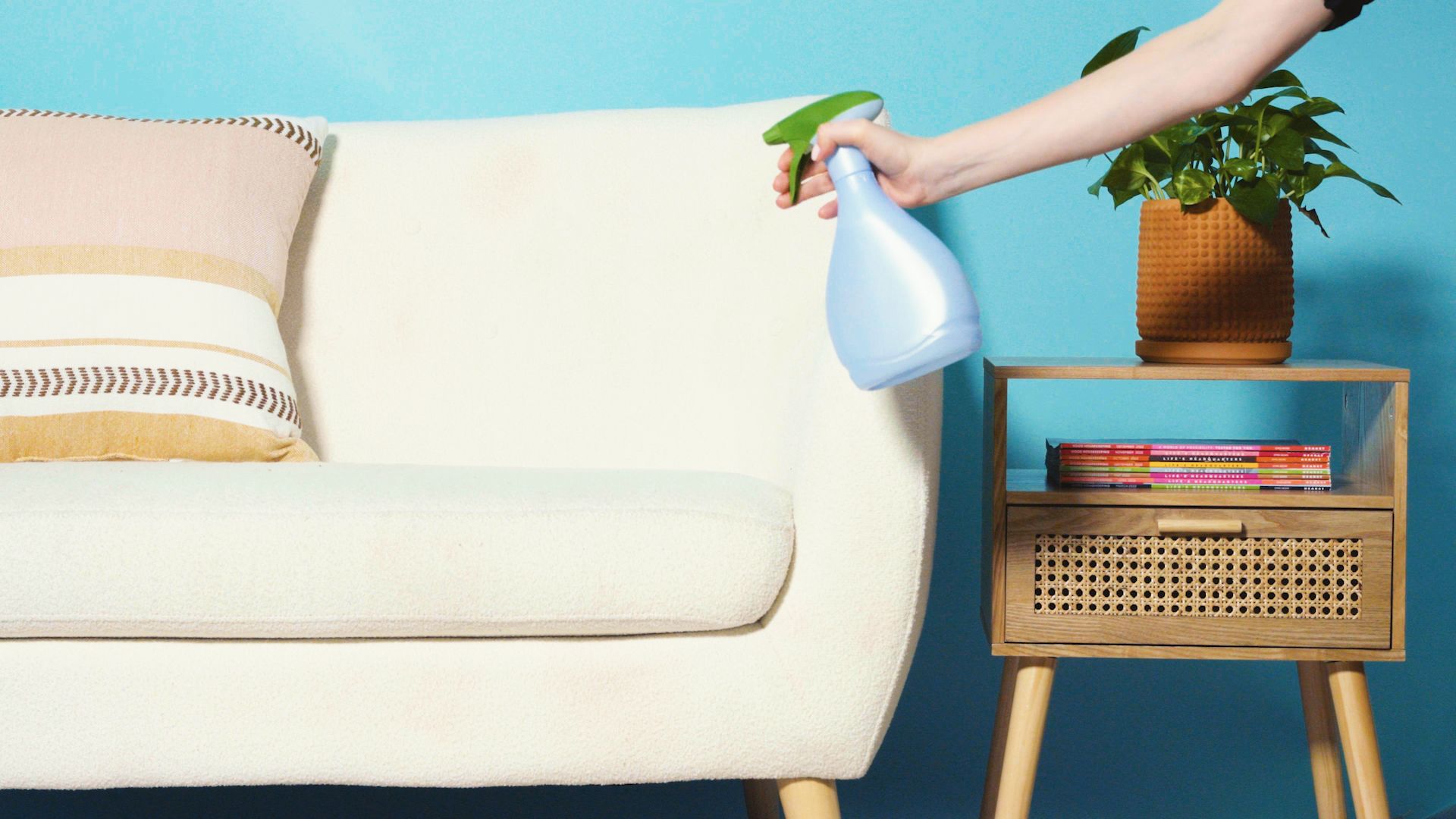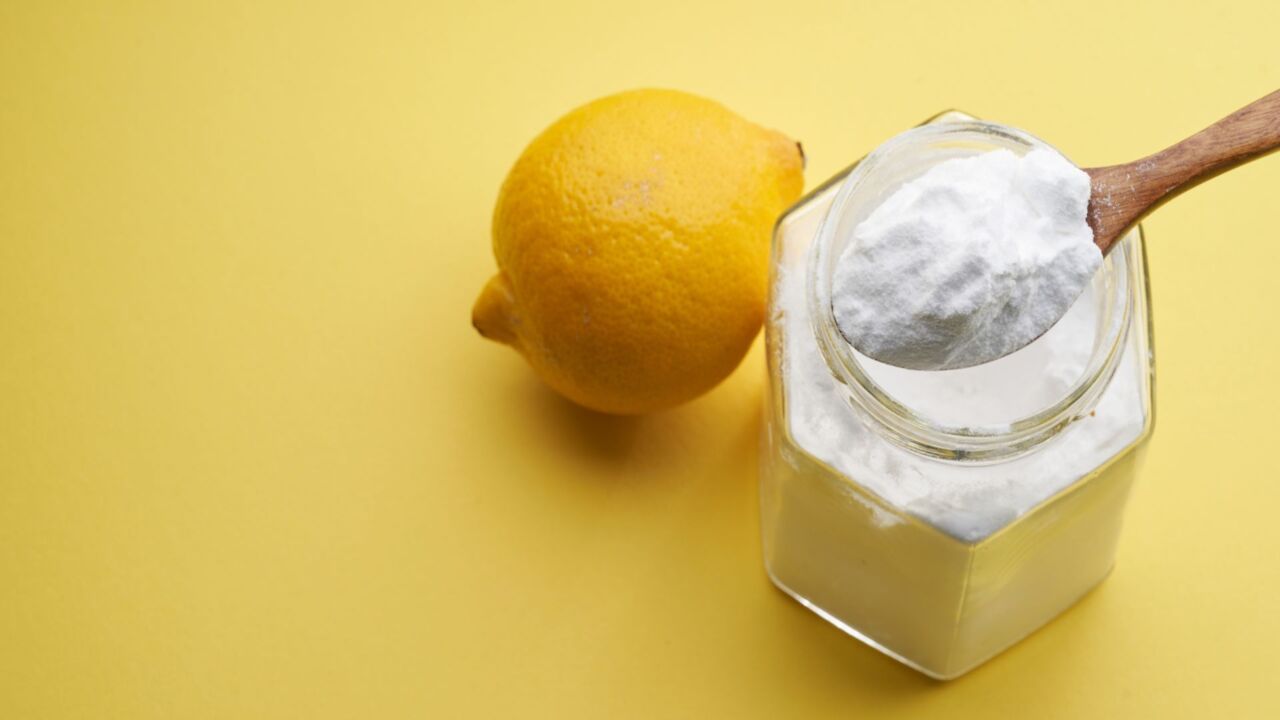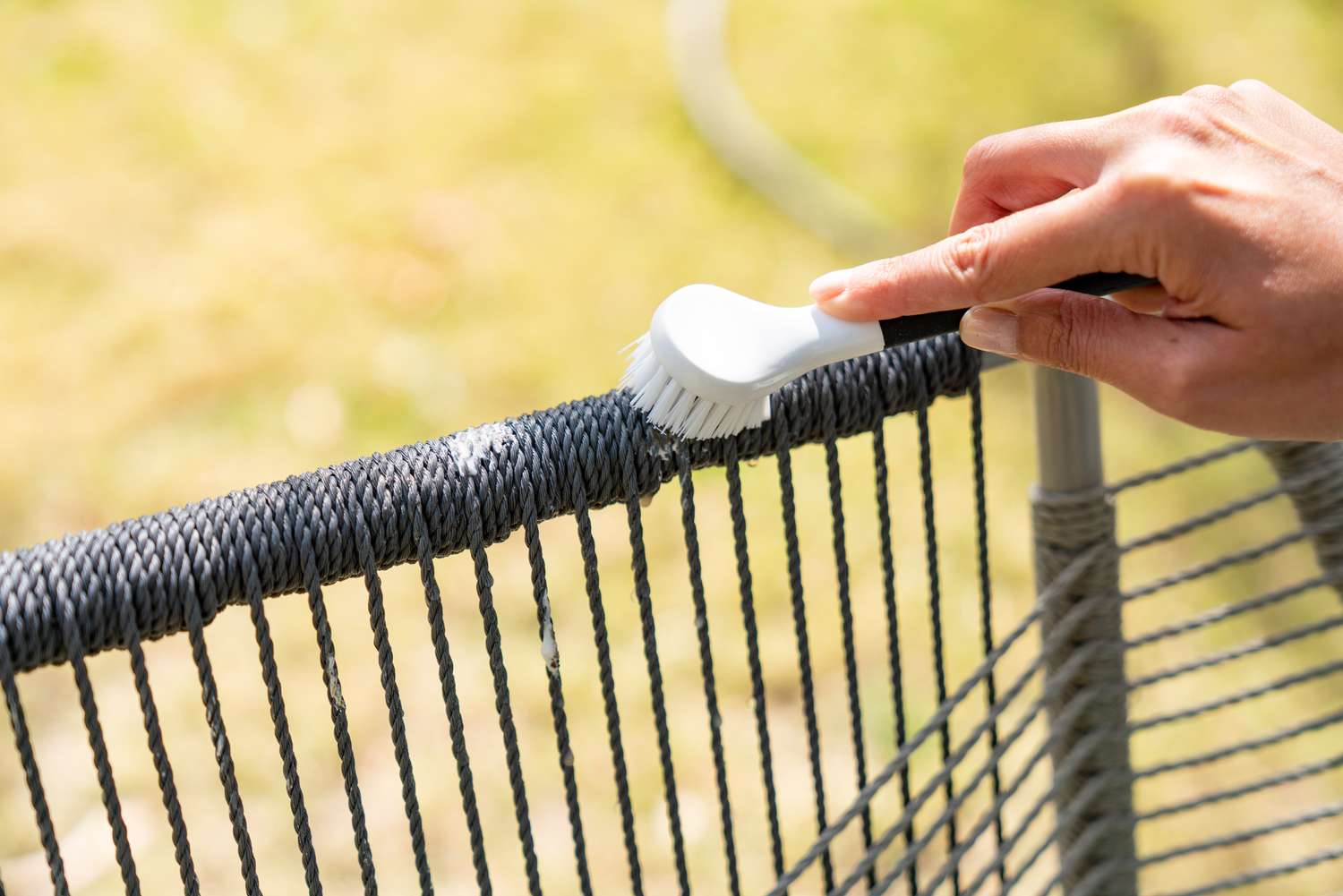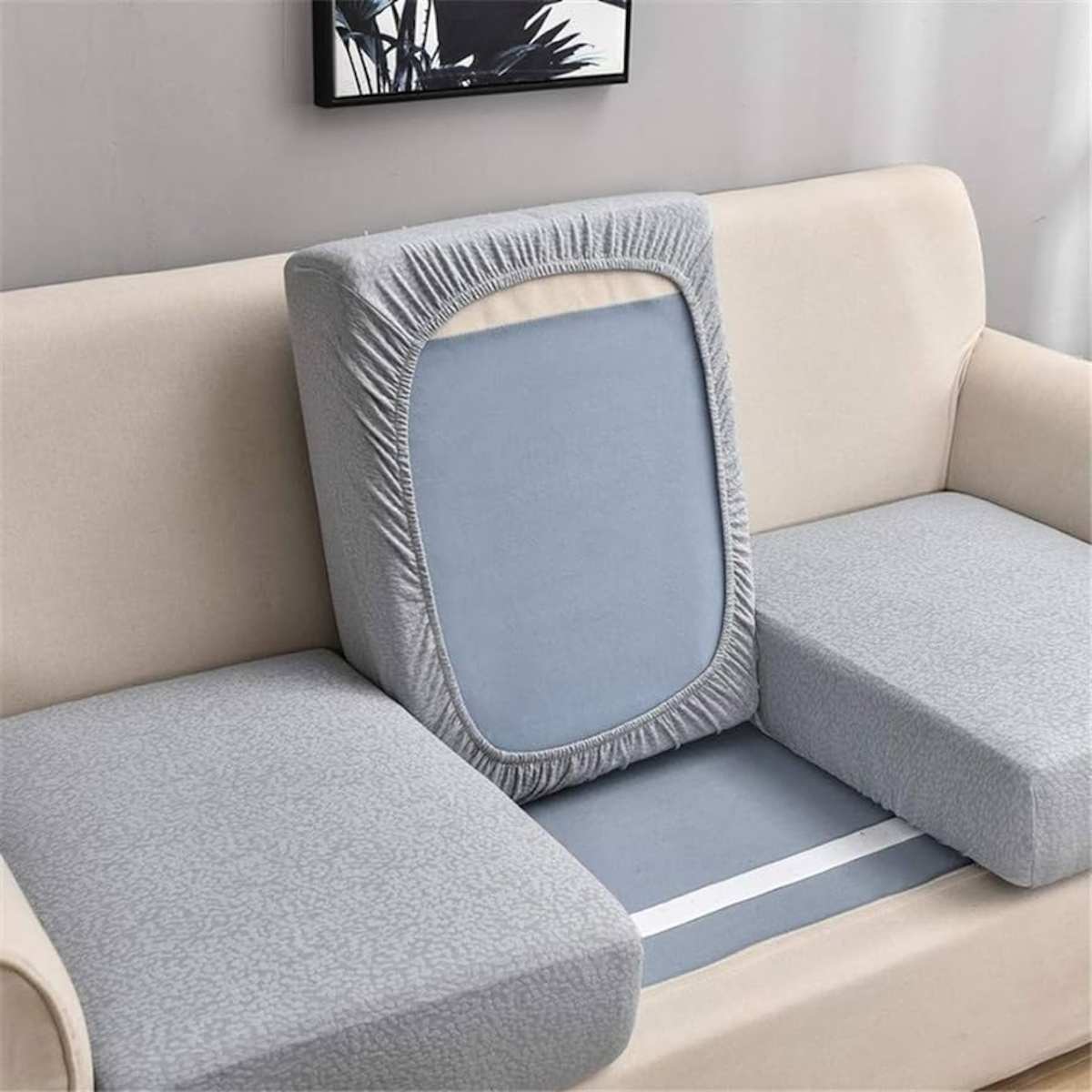Home>Interior Design>Cleaning Methods You Should Never Use On A Fabric Couch


Interior Design
Cleaning Methods You Should Never Use On A Fabric Couch
Modified: August 28, 2024
Avoid damaging your fabric couch with these cleaning methods. Learn how to properly maintain your couch with expert interior design tips.
(Many of the links in this article redirect to a specific reviewed product. Your purchase of these products through affiliate links helps to generate commission for Storables.com, at no extra cost. Learn more)
Introduction
When it comes to cleaning a fabric couch, it’s essential to use the right methods to avoid damaging the material. Fabric sofas are a popular choice for many homeowners due to their comfort and aesthetic appeal. However, they can be quite challenging to clean, as using the wrong cleaning methods can lead to discoloration, fading, or even permanent damage to the fabric.
In this article, we will explore some cleaning methods that you should never use on a fabric couch. By understanding what not to do, you can ensure that your couch remains in pristine condition for years to come.
Key Takeaways:
- Avoid steam cleaning, bleach, scrubbing with a brush, ammonia, excessive water, and dry cleaning solvents to keep your fabric couch in pristine condition. Opt for gentle, fabric-friendly cleaning methods to maintain its longevity and beauty.
- Regularly vacuum, promptly attend to spills, and use mild upholstery cleaners to effectively clean and maintain your fabric couch. Consult professional upholstery cleaners for expert care and ensure your couch remains in excellent condition for years to come.
Steam Cleaning
Steam cleaning is a popular method for deep cleaning various surfaces, but it should be avoided when it comes to fabric couches. While steam is an effective way to remove dirt and stains, the high temperature and moisture can cause damage to the fabric fibers.
The steam can penetrate deep into the fabric, causing it to become overly saturated. This can result in shrinkage, stretching, or even the development of mold and mildew. In addition, the heat from the steam can weaken the fabric and lead to color fading or discoloration.
Instead of steam cleaning, it is recommended to use a gentle upholstery cleaner specifically designed for fabric sofas. These products are formulated to clean the fabric without causing any damage or discoloration. Always remember to carefully read the instructions on the cleaner and perform a spot test on an inconspicuous area of the couch before cleaning the entire surface.
When cleaning a fabric couch, it’s important to use a soft, microfiber cloth or upholstery brush to gently remove any dirt or stains. Avoid using excessive force or scrubbing too vigorously, as this can damage the delicate fabric fibers.
Regular maintenance is also key to keeping your fabric couch clean. Vacuuming the surface regularly will help remove any loose dirt or debris that can accumulate over time. Additionally, promptly attending to any spills or stains by blotting (never rubbing) them with a clean, damp cloth can prevent them from setting into the fabric.
By avoiding steam cleaning and using the appropriate cleaning methods, you can prolong the lifespan of your fabric couch and ensure that it remains in pristine condition for years to come.
Bleach or Harsh Chemicals
When faced with tough stains or discoloration on a fabric couch, it can be tempting to reach for bleach or harsh chemicals to tackle the problem. However, this is a big no-no when it comes to fabric couches, as these substances can cause irreversible damage to the fabric.
Bleach is a powerful chemical agent that is primarily used for whitening and disinfecting. While it may be effective in removing certain types of stains, it is not suitable for use on fabric couches. Bleach can weaken the fabric fibers, leading to fraying, thinning, or even complete disintegration of the fabric. It can also cause the fabric to change color, leaving behind unsightly patches or marks.
Similarly, other harsh chemicals such as ammonia or strong detergents should be avoided. These chemicals can strip the fabric of its natural oils and protective coatings, resulting in dryness, brittleness, and overall weakening of the material. They can also cause discoloration and fading, making your fabric couch look worn and dingy over time.
Instead of using bleach or harsh chemicals, opt for mild and gentle cleaners specifically designed for fabric upholstery. Look for products that are labeled as suitable for use on fabric couches and follow the manufacturer’s instructions carefully.
In cases where you’re dealing with stubborn stains that won’t budge with regular cleaning methods, it’s best to consult a professional upholstery cleaner who has the expertise and tools to safely remove the stains without causing any damage to the fabric.
Remember, prevention is also key when it comes to keeping your fabric couch clean. Avoid placing dark-colored or strongly pigmented items on your couch, as they can transfer color onto the fabric. Additionally, implement house rules such as no eating or drinking on the couch to minimize the risk of spills and stains.
By steering clear of bleach and harsh chemicals, you can maintain the integrity and beauty of your fabric couch for years to come.
Scrubbing with a Brush
When it comes to cleaning a fabric couch, using a brush may seem like a good idea to scrub away dirt and stains. However, scrubbing with a brush is another cleaning method that should be avoided, as it can cause damage to the fabric.
The bristles of a brush can be too harsh for delicate fabric fibers, especially if the brush has stiff or abrasive bristles. Scrubbing vigorously can lead to fraying, tearing, or even pulling out the threads of the fabric. This can result in visible damage to the surface of the couch and compromise its overall appearance.
Instead of scrubbing with a brush, it is recommended to use a soft, microfiber cloth or a sponge to gently blot or dab at the stains. This method is much gentler on the fabric and minimizes the risk of causing any damage.
When dealing with a stain, it’s important to avoid rubbing or pressing too hard, as this can push the stain deeper into the fabric or spread it around, making it even harder to remove. Instead, blot the stain gently with a clean cloth or sponge, working from the outside towards the center to prevent the stain from spreading.
If the stain persists, you can consider using a mild upholstery cleaner specifically designed for fabric couches. Apply the cleaner according to the instructions provided and use a gentle, circular motion to work the cleaner into the stain. Always remember to perform a spot test on an inconspicuous area of the couch before using the cleaner on the entire surface.
After cleaning the stain, make sure to rinse the area thoroughly with clean water to remove any residue from the cleaning solution. Then, blot the area dry with a clean cloth and allow it to air dry completely before using the couch again.
By avoiding scrubbing with a brush and using gentle cleaning techniques, you can effectively remove stains from your fabric couch without causing any damage to the fabric.
Never use bleach or harsh chemicals on a fabric couch as it can cause discoloration and damage the fabric. Stick to gentle, fabric-safe cleaners and always spot test first.
Using Ammonia or Vinegar
Ammonia and vinegar are common household cleaning agents that many people turn to for various cleaning tasks. However, when it comes to cleaning a fabric couch, it’s best to avoid using these substances, as they can cause damage to the fabric and leave behind unwanted odors.
Ammonia, a strong alkaline compound, can be too harsh for delicate fabric fibers. It can weaken the fabric and cause it to become brittle over time. Additionally, ammonia can alter the color of the fabric, leading to discoloration or fading.
Vinegar, on the other hand, is acidic in nature. While it is known for its deodorizing properties, using vinegar on a fabric couch can also have adverse effects. The acidity of vinegar can damage the fabric fibers, making them prone to fraying and weakening the overall structure of the couch. Furthermore, the strong smell of vinegar can linger on the fabric, creating an unpleasant odor.
Instead of using ammonia or vinegar, it is recommended to use a mild upholstery cleaner specifically designed for fabric couches. These cleaners are formulated to be gentle on the fabric while effectively removing dirt and stains.
If you prefer a more natural approach to cleaning, you can consider using a mixture of mild dish soap and lukewarm water. Create a solution by mixing a few drops of dish soap in a bucket of water. Dip a clean cloth or sponge into the solution, wring out the excess moisture, and gently blot the stained area. Avoid over saturating the fabric and make sure to rinse the area thoroughly with clean water afterward.
Always remember to perform a spot test on a small, inconspicuous area of the couch before using any cleaning solution to ensure that it doesn’t cause any adverse effects on the fabric.
By avoiding the use of ammonia or vinegar and opting for mild, fabric-friendly cleaners, you can clean your fabric couch effectively and safely without risking damage to the fabric.
Read more: Should You Use Fabric Softener On Towels?
Using Excessive Water
When it comes to cleaning a fabric couch, the use of water is essential, but it’s important to avoid using excessive amounts. While water is often used in cleaning to remove dirt and stains, using too much water on a fabric couch can lead to problems.
Excessive water can saturate the fabric, causing it to become overly wet. This can lead to several issues, including prolonged drying times, the development of mold and mildew, and potential damage to the fabric fibers.
When cleaning a fabric couch, it’s important to use water sparingly. Instead of pouring or spraying water directly onto the fabric, it’s best to use a damp cloth or sponge to apply water to the stained or soiled areas. This targeted approach allows you to control the amount of moisture being introduced to the fabric.
After applying water to the stain, use a blotting or dabbing motion with a clean cloth or sponge to gently lift away the dirt or stain. Avoid rubbing or scrubbing, as this can push the stain further into the fabric or cause it to spread.
Once the stain has been treated, make sure to thoroughly rinse the area with clean water to remove any remaining residue. Use a clean cloth or sponge to blot the area dry, and allow it to air dry completely before using the couch again.
It’s also important to take into consideration the drying time of a fabric couch. If the fabric remains damp for an extended period, it can create an environment ideal for the growth of mold and mildew. To prevent this, ensure proper air circulation in the room and use fans or open windows to facilitate faster drying.
In cases where the entire couch needs cleaning or if it has suffered from extensive water damage, it’s best to consult a professional upholstery cleaner. They have the expertise and equipment to safely clean and dry the fabric couch without causing any damage.
By using water in moderation and taking the necessary precautions for drying, you can effectively clean your fabric couch without risking any water-related damage.
Dry Cleaning Solvents
Dry cleaning solvents are commonly used for cleaning delicate fabrics that cannot be washed with water. However, when it comes to fabric couches, it is crucial to avoid using dry cleaning solvents, as they can cause damage to the fabric and leave behind residue.
Dry cleaning solvents are typically made up of strong chemicals that can be harsh on fabric fibers. They are designed to dissolve dirt and stains without the need for water. While they can be effective for certain fabrics, using them on a fabric couch can lead to several issues.
Firstly, these solvents can cause discoloration or fading of the fabric. The chemicals in the solvents can alter the dye or color of the fabric, resulting in patchy or uneven coloration. This can significantly impact the overall appearance of the couch and make it look worn or damaged.
Secondly, dry cleaning solvents can leave behind residue on the fabric. Even if you follow the instructions carefully and use the recommended amount of solvent, there is still a chance that residue will remain. This residue can attract dirt and dust, making the couch appear dirty and dull over time.
Furthermore, prolonged exposure to dry cleaning solvents can weaken the fabric fibers. The chemicals can strip away the natural oils and protective coatings of the fabric, leading to dryness and brittleness. This can make the fabric more prone to damage, such as fraying or tearing.
Instead of using dry cleaning solvents on a fabric couch, it’s best to opt for other gentle cleaning methods. Regular vacuuming can help remove dust and debris from the surface of the couch. For stains or spills, use a mild upholstery cleaner specifically designed for fabric upholstery.
If you are unsure about which cleaning products are suitable for your fabric couch, it’s always best to consult the manufacturer’s guidelines or seek professional advice. Professional upholstery cleaners have the knowledge and experience to choose the appropriate cleaning method and products for your specific type of fabric.
By avoiding the use of dry cleaning solvents and opting for gentler cleaning alternatives, you can ensure that your fabric couch remains clean and in good condition for years to come.
Conclusion
Properly cleaning and maintaining a fabric couch is essential for its longevity and overall appearance. However, it’s crucial to be aware of the cleaning methods that should never be used on a fabric couch to avoid causing damage to the material.
Using steam cleaning, bleach or harsh chemicals, scrubbing with a brush, using ammonia or vinegar, using excessive water, and dry cleaning solvents are all methods that should be avoided when it comes to cleaning a fabric couch.
Steam cleaning can lead to fabric damage and color fading, while bleach or harsh chemicals can weaken the fabric fibers and cause discoloration. Scrubbing with a brush can result in fraying and tearing of the fabric, while using ammonia or vinegar can damage the fabric fibers and leave behind unwanted odors. Additionally, excessive water can lead to mold growth and fabric damage, and dry cleaning solvents can cause discoloration, residue buildup, and fabric weakening.
Instead, opt for gentle cleaning methods that are specifically designed for fabric upholstery. Use mild upholstery cleaners, dab or blot stains with a soft cloth or sponge, and rinse with water in moderation. Regular vacuuming and prompt attention to spills can also prevent dirt and stains from setting into the fabric.
When in doubt, consult the manufacturer’s guidelines or seek professional upholstery cleaning services for proper care and cleaning of your fabric couch. Professional cleaners have the expertise and knowledge to choose the right cleaning methods and products for your specific fabric type, ensuring effective and safe cleaning without causing any damage.
By avoiding these harmful cleaning methods and using appropriate techniques, you can keep your fabric couch looking clean, fresh, and in excellent condition for years to come.
Frequently Asked Questions about Cleaning Methods You Should Never Use On A Fabric Couch
Was this page helpful?
At Storables.com, we guarantee accurate and reliable information. Our content, validated by Expert Board Contributors, is crafted following stringent Editorial Policies. We're committed to providing you with well-researched, expert-backed insights for all your informational needs.















0 thoughts on “Cleaning Methods You Should Never Use On A Fabric Couch”